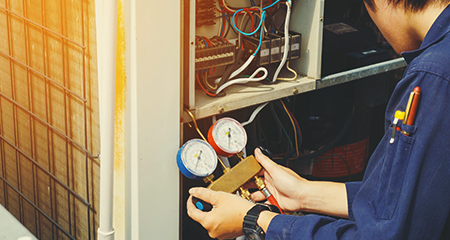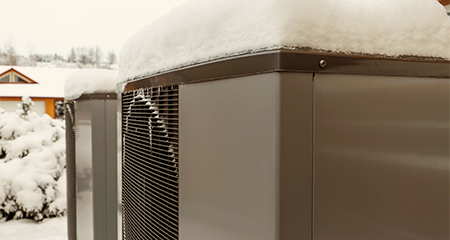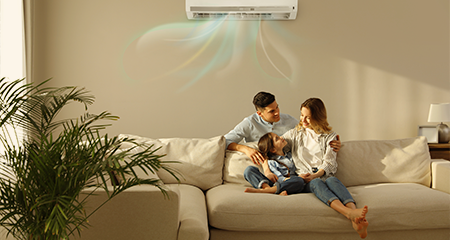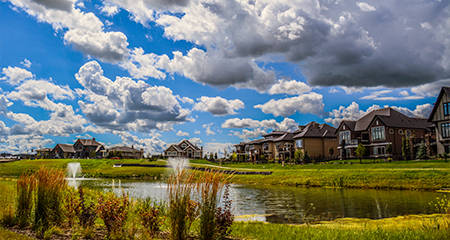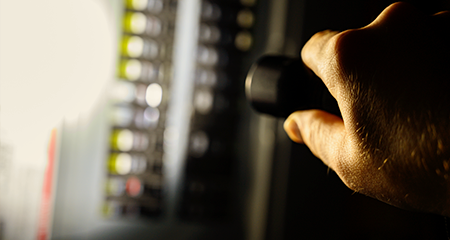1. Switch to energy-efficient lighting
Start your spring cleaning by switching to energy-efficient lighting in your house. Old-fashioned light bulbs produce more heat and use more energy than the more efficient bulbs like light emitting diodes (LEDs). Replacing your incandescent light bulbs with LED bulbs - or even compact fluorescent (CFL) bulbs, may significantly improve your lighting efficiency because they produce less heat and use less energy. LED bulbs use 70-90 percent less energy and last at least 15 times longer than incandescent light bulbs.
2. Adjust your thermostat
If you use an AC unit to cool your during the warmer months, you can control your energy bills by adjusting your home’s thermostats. Planning on being away for more than three hours? Turn up the temperature so that your AC doesn't turn on as frequently. Raising your thermostat by 1 degree Celsius over an eight-hour period could save around two percent of your energy consumption.
3. Service your heating and air conditioning system
Don’t forget to clean or replace the filters in your heating and air conditioning system. Check whether your air filters need to be replaced. Air filter maintenance will improve air quality and ensure the system is free of obstructions and working as efficiently as possible.
4. Check your ceiling fans
A great way to reduce energy during hot summer months is to use ceiling fans instead of your air conditioning system. Ceiling fans may help decrease your energy bill while making your home feel cooler. However, make sure to change the direction of your ceiling fans in the summer. Changing your fans to rotate counter-clockwise will produce a downdraft that pushes cool air into the space below.
Pro energy-saving tip: Look closely at your ceiling fan for a tiny switch. Believe it or not, this switch is an energy saver. Ceiling fans normally operate clockwise to push down warm air in the winter; flipping the switch to redirect your fan counter-clockwise will circulate much-needed cool air in the summer. This can help your home feel cooler without lowering the thermostat.
5. Inspect your window and door openings
Along with cleaning the glass in your doors and windows, check the screens and tracks. If dirt has collected in your window and door tracks, they won't seal properly and will waste the air conditioner's energy during warmer months by letting out any cold air. Seal any possible cracks and openings around the home to prevent cool air from escaping. You can do this by buying weather stripping and/or duct tape to seal any potential air leaks you come across.
6. Install window shades
Installing window coverings such as blinds, shades or curtains can do more than add a nice touch to your home decor. These coverings will block light and heat from the sun, keeping your home cooler so you don't have to rely as heavily on your AC unit, saving energy in the long run.
7. Check your refrigerator coils
The refrigerator is one of the major energy consumers in our homes. In fact, the average refrigerator will use about 180 watts. That adds up to about 130 kilowatt-hours (kWh) a month! To ensure your refrigerator is energy efficient, clean the seals on your door to ensure it closes tightly, preventing cold air from escaping and keeping your food fresh longer. Also, clean the refrigerator coils to remove accumulated dust. Dirty coils force the fridge to work harder to keep food inside cold, which can drive up your electricity bill.
8. Use your dishwasher during cooler hours of the day
Like your refrigerator, your dishwasher is a major energy consumer. On average, it uses about 1800 watts. Depending on how often you run it, it could be using up to 54 kWh each month. It can also heat up your home, causing your AC to work harder to maintain a comfortable temperature. You can minimize this by washing your dishes during cooler hours of the day.
Pro energy-saving tip: The average dishwasher uses about 6 gallons of water per cycle. Wash with full loads and turn off heated dry or wash your dishes by hand in cold water to consume less energy.
9. Clean your washing machine
You rely on your washing machine to clean your clothes, but are you returning the favour? A dirty washing machine doesn’t clean your clothes as effectively. Dirt and lint collect in plumbing traps, while soap can build up on the sides and edges of your wash tub. To prevent mold or mildew build-up, scrub seals, gaskets, and dispensers and clean the tub rim and filter. You can do this by soaking towels in hydrogen peroxide or white vinegar and packing them in the gasket's cavities to loosen up grease or mold. To clean the tub's rim, take the same type of soaked towel and scrub the top edges as well as any areas that water can get to.
10. Update old appliances and electronics
Appliances can account for about 13 percent of your home's energy usage. If your current appliances are old, consider upgrading to energy-efficient home appliances for long-term savings. Research your options to replace your existing model with one that has an ENERGY STAR certification. New appliances will require investment now, but you'll use less energy, which could help lower your monthly utility bills over time.
Start saving energy today
Energy-saving tips such as switching to energy-efficient lighting and regularly cleaning the air filters in your home can make a big difference in your budget and home energy consumption. Following these 10 tips can reduce your usage and help you avoid the shock of inflated energy bills in the warmer months.
Note: These tips are suggested as general practices. However, actual results may vary.


















